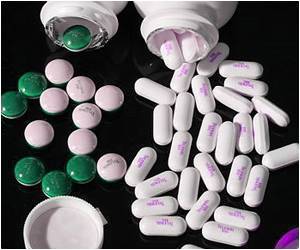Dabrafenib Medication Information
Discover comprehensive details about Dabrafenib, including its pronunciation, uses, dosage instructions, indications, and guidelines on how and when to take it or avoid it.
The updated prescription information covers potential side effects, precautions, warnings, and storage recommendations.
Additionally, explore the Dabrafenib brands available in India and internationally, along with pricing information. For personalized advice, consult your healthcare provider.
Generic Name : Dabrafenib Pronunciation : da-BRAF-e-nib Therapeutic Classification : ChemotherapyBrand Names or Trade Names of Dabrafenib
India :
Tafinlar
Why is Dabrafenib Prescribed? (Indications)
Dabrafenib is used to treat melanoma with a specific BRAF V600E gene mutation, a certain type of skin cancer in patients who cannot be treated by a surgery or whose cancer cells have migrated to other body parts.Dabrafenib is used either alone or in combination with another medication, trametinib either to prevent or treat skin cancer with affected lymph nodes that have returned after successful removal of the tumor.
Dabrafenib is used in combination along with trametinib to treat non-small cell lung cancer (NSCLC) and thyroid cancer in patients who have not responded to earlier treatments or in cases where the cancer cells have moved to other parts of the body.
Dabrafenib should be used only when the cancer is associated with a specific BRAF V600E or V600K gene mutation which is confirmed by an FDA-approved test.
When should Dabrafenib not be taken? (Contraindications)
Dabrafenib should not be used in patients with-• Allergic to dabrafenib
• Pregnancy and breastfeeding
• Treatment to correct infertility
• Severe kidney or liver disease
Dabrafenib should not be given to children under 18 years of age as safety and effectiveness of dabrafenib have not been studied in these age groups.
What is the dosage of Dabrafenib?
• The recommended dose of dabrafenib for adults is 150 mg taken two times daily either as a single agent or together with trametinib until the progression of the disease or up until the treatment with the drug does not result in intolerable toxicity.• The dose of dabrafenib can be adjusted if side effects occur. The treatment with dabrafenib can be stopped temporarily and can be started again when the side effects subside.
• If the side effects are severe and bothersome, the treatment with dabrafenib can be permanently discontinued and patients must be treated appropriately.
• The dose of dabrafenib can be reduced to 100 mg twice daily when side effects occur followed by a further dose reduction of 75 mg and 50 mg twice daily subsequently.
• Permanently discontinue dabrafenib treatment, if the patient is unable to tolerate the dose of 50 mg two times daily.
• The dose adjustment of dabrafenib is not required in patients with mild liver or kidney damage.
How should Dabrafenib be taken?
• Dabrafenib is available as a capsule which should be taken by mouth either at least one hour before food or 2 hours after food.• Take dabrafenib capsules at the same time every day and make sure that there is a gap of 12 hours maintained between two doses.
• Do not split, crush or open the contents of dabrafenib capsules.
• If a dose of dabrafenib is missed, take the missed dose of dabrafenib within 6 hours of the next scheduled dose of dabrafenib.
• If the next dose of dabrafenib is scheduled to be taken in 6 hours, leave the missed dose and take the following dose as per the next scheduled time.
What are the warnings and precautions for Dabrafenib?
• Bleeding can occur anywhere in the stomach or brain during treatment with dabrafenib and patients should be monitored for such symptoms or signs.• Treatment with dabrafenib can be stopped temporarily during bleeding episodes and can be restarted with the lowest effective dose. Permanently discontinue treatment if the bleeding is severe.
• Cardiomyopathy or disease of the heart muscle making the pumping of the blood harder is reported in patients taking dabrafenib capsules. So, patients must get an ECG or a Multigated Acquisition (MUGA) scan before being given dabrafenib, and one month after taking dabrafenib, followed by regular tests and scans at every three-month interval.
• Monitor patients for any symptoms and signs of uveitis such as changes in vision, sensitivity to light, and eye pain and adjust treatment with dabrafenib or permanently discontinue depending on the eye damage.
• Episodes of high fever can occur along with chills, low blood pressure and dehydration during dabrafenib treatment. In such cases, fever-reducing pills such as paracetamol along with steroid medications can be taken with dabrafenib when there is no evidence of infection.
• Destruction of red blood cells or hemolytic anemia can occur when dabrafenib is given to patients with Glucose-6-phosphate dehydrogenase (G6PD) deficiency. So, patients must be monitored carefully to avoid serious complications.
• The skin should be checked regularly every two months during dabrafenib therapy and for at least six months after the treatment is stopped.
What are the side effects of Dabrafenib?
Gastrointestinal: Constipation, nausea, vomiting, swelling of the pancreas, loss of appetite, bleeding in stomach or intestineNervous system: Headache, dizziness, abnormal weakness
Respiratory: Coughing up blood, sore throat, runny nose or the common cold, breathing difficulty, chest pain
Musculoskeletal: Muscle pain, back pain, pain in the joints
Skin: Rashes, hair loss, abnormal thickening of the skin, new warts, red skin, skin peeling, skin tags
Lab abnormalities: High blood sugar levels, low levels of sodium and phosphate in blood, increased levels of alkaline phosphatase
Others: Fever, chills, eye pain, swelling of eyelids, heart disease, swelling of kidneys, sensitivity to light
What are the other precautions for Dabrafenib?
• Women of childbearing age should take effective non-hormonal contraception during dabrafenib treatment that should be continued for at least two weeks after taking the last dose of dabrafenib.• Never take hormonal contraceptives as these effects are greatly affected by dabrafenib capsules.
• Inform the doctor immediately when the patient gets pregnant or a pregnancy is suspected during dabrafenib treatment.
• Breastfeeding should be stopped during dabrafenib therapy and for at least two weeks after stopping dabrafenib capsules as it is harmful to the baby.
• Dabrafenib can affect the fertility status; therefore patients who have plans for pregnancy must be advised to prepare for sperm or egg banking for future use before starting the treatment with dabrafenib.
What are the Drug Interactions of Dabrafenib?
Ketoconazole or gemfibrozil if taken together with dabrafenib result in an increased concentration of dabrafenib leading to toxicity; therefore they should be avoided.Dabrafenib reduces the effect of the following drugs and should not be taken together-
• Warfarin
• Midazolam
• Hormonal contraceptives
• Dexamethasone
What are the storage conditions for Dabrafenib?
• Store dabrafenib capsules at a controlled room temperature between 20°C and 25°C.• Do not remove the silica gel desiccant provided in the capsule container since it protects the capsule against moisture.
• Keep away from children and pets.








